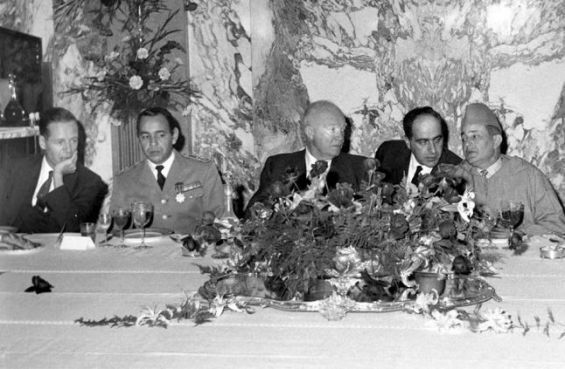On the 4th of July, the United States of America celebrate Independence Day, to which Morocco is historically related. In a previous article, Yabiladi spotlighted how the Alaouite Sultan Sidi Mohammed Ben Abdullah insisted on signing a treaty with the American Republic, being the first leader in the world to recognize the sovereignty of the USA.
Through a series of well-studied steps, the two nations signed the famous treaty of Friendship and Amity, officializing relations. Diplomatic ties between Morocco and the United States were carefully maintained afterwards, reaching the day the Kingdom attained its independence.
The American state returned Morocco’s favor, strengthening diplomatic relations with the North African Kingdom. When Rabat broke free from the French in 1956, President Dwight David Eisenhower sent King Mohammed V a message. «My government renews its wishes for the peace and prosperity of Morocco, and has asked me to express its gratification that Morocco has freely chosen, as a sovereign nation, to continue in the path of its traditional friendship», wrote the USA’s 34th president in a letter his diplomatic agent in the Kingdom delivered to the King.
Mohammed V responded to Eisenhower’s letter, stressing that Morocco will still abide to the 1836 treaty the two countries signed to establish diplomatic and trade relations.
During the same year, the American government rushed into changing the status of its diplomatic representation. The latter was upgraded from Diplomatic agent to Ambassador. According to the US embassy in Morocco, diplomat Cavendish W. Cannon was appointed as the US first Ambassador to the Kingdom in July 1956.
Months later, the US mission in Morocco engaged in the process of establishing the principles of the independence of Morocco.
Abolishing the international régime of Tangier
According to the «United States Treaties and Other International Agreements, Volume 7», a document issued by the US government, American plenipotentiaries attended an international conference dedicated to the status of Tangier.
By the end of the conference held in Fedala, the city of Mohammedia, a protocol was signed by Cavendish W. Cannon, recognizing the King’s sovereignty over tangier and abolishing the international status the city had before Morocco gained independence.
The United States «have agreed to recognize the abolition of the international régime of the Tangier zone», said the document, indicating that «His Sherifian Majesty has been reinstated in all his powers and capacities in this part of the Sherifian Empire, which shall henceforth be under his entire and sole sovereignty, and that gives him the unrestricted right to determine the future régime of tangier».
Relations between Morocco and the United States were further boosted when King Mohammed V went on his first USA trip. He was received in November 1957 by President Eisenhower.
Two years later, American vice-president Richard Milhous Nixon paid the Kingdom a visit where he discussed ways to strengthen cooperation between Washington and Rabat with King Mohammed V.





 chargement...
chargement...













